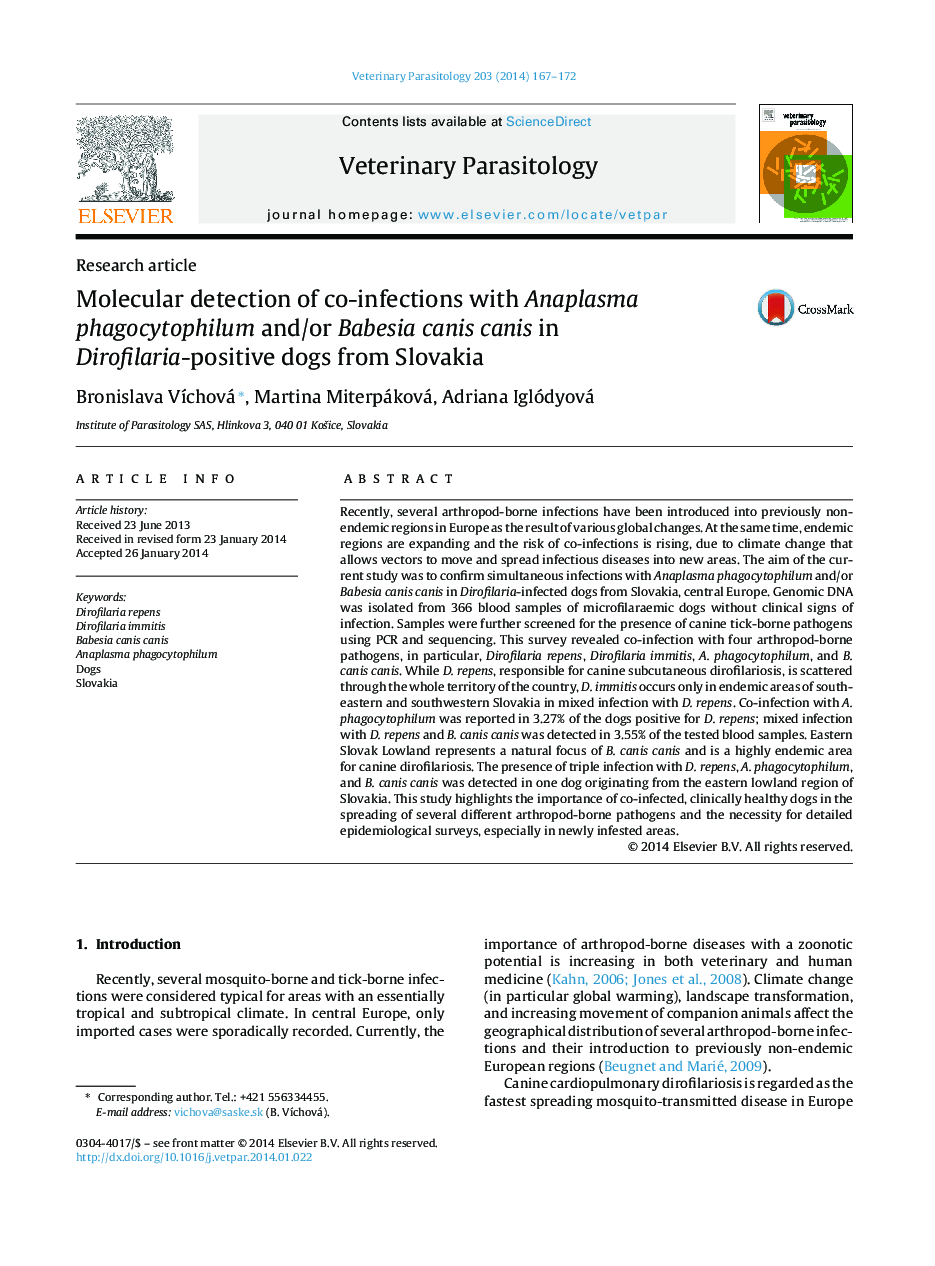| Article ID | Journal | Published Year | Pages | File Type |
|---|---|---|---|---|
| 5803364 | Veterinary Parasitology | 2014 | 6 Pages |
Recently, several arthropod-borne infections have been introduced into previously non-endemic regions in Europe as the result of various global changes. At the same time, endemic regions are expanding and the risk of co-infections is rising, due to climate change that allows vectors to move and spread infectious diseases into new areas. The aim of the current study was to confirm simultaneous infections with Anaplasma phagocytophilum and/or Babesia canis canis in Dirofilaria-infected dogs from Slovakia, central Europe. Genomic DNA was isolated from 366 blood samples of microfilaraemic dogs without clinical signs of infection. Samples were further screened for the presence of canine tick-borne pathogens using PCR and sequencing. This survey revealed co-infection with four arthropod-borne pathogens, in particular, Dirofilaria repens, Dirofilaria immitis, A. phagocytophilum, and B. canis canis. While D. repens, responsible for canine subcutaneous dirofilariosis, is scattered through the whole territory of the country, D. immitis occurs only in endemic areas of southeastern and southwestern Slovakia in mixed infection with D. repens. Co-infection with A. phagocytophilum was reported in 3.27% of the dogs positive for D. repens; mixed infection with D. repens and B. canis canis was detected in 3.55% of the tested blood samples. Eastern Slovak Lowland represents a natural focus of B. canis canis and is a highly endemic area for canine dirofilariosis. The presence of triple infection with D. repens, A. phagocytophilum, and B. canis canis was detected in one dog originating from the eastern lowland region of Slovakia. This study highlights the importance of co-infected, clinically healthy dogs in the spreading of several different arthropod-borne pathogens and the necessity for detailed epidemiological surveys, especially in newly infested areas.
